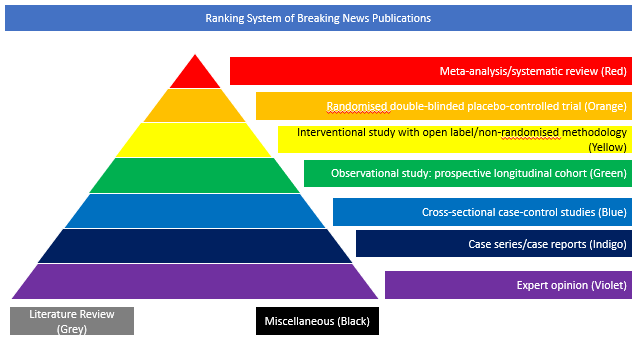Cross-sectional case-control studies (Blue)
To date, influenza epidemics have been considered suitable for use as a model for the COVID-19 epidemic, given that they are respiratory diseases with similar modes of transmission. However, data directly comparing the two diseases are scarce. In this study, the authors performed a nationwide retrospective cohort study using the French national administrative database (PMSI), which includes discharge summaries for all hospital admissions in France. All patients hospitalised for COVID-19 from March 1 to April 30, 2020, and all patients hospitalised for influenza between Dec 1, 2018, and Feb 28, 2019, were included. Comparisons of risk factors, clinical characteristics, and outcomes between patients hospitalised for COVID-19 and influenza were performed, with data also stratified by age group. 89 530 patients with COVID-19 and 45 819 patients with influenza were hospitalised in France during the respective study periods. The median age of patients was 68 years (IQR 52–82) for COVID-19 and 71 years (34–84) for influenza. Patients with COVID-19 were more frequently obese or overweight, and more frequently had diabetes mellitus, hypertension, and dyslipidaemia than patients with influenza, whereas those with influenza more frequently had heart failure, chronic respiratory disease, cirrhosis, and deficiency anaemia. Patients admitted to hospital with COVID-19 more frequently developed acute respiratory failure, pulmonary embolism, septic shock, or haemorrhagic stroke than patients with influenza, but less frequently developed myocardial infarction or atrial fibrillation. In-hospital mortality was higher in patients with COVID-19 than in patients with influenza (15 104 [16·9%] of 89 530 vs 2640 [5·8%] of 45 819), with a relative risk of death of 2·9 (95% CI 2·8–3·0) and an age-standardised mortality ratio of 2·82. Of the patients hospitalised, the proportion of paediatric patients (<18 years) was smaller for COVID-19 than for influenza (1227 [1·4%] vs 8942 [19·5%]), but a larger proportion of patients younger than 5 years needed intensive care support for COVID-19 than for influenza (14 [2·3%] of 613 vs 65 [0·9%] of 6973). In adolescents (11–17 years), the in-hospital mortality was ten-times higher for COVID-19 than for influenza (five [1·1% of 458 vs one [0·1%] of 804), and patients with COVID-19 were more frequently obese or overweight. The authors concluded that the presentation of patients with COVID-19 and seasonal influenza requiring hospitalisation differs considerably. SARS-CoV-2 is likely to have a higher potential for respiratory pathogenicity, leading to more respiratory complications and to higher mortality. In children, although the rate of hospitalisation for COVID-19 appears to be lower than for influenza, in-hospital mortality is higher; however, low patient numbers were a limitation. These findings highlight the importance of appropriate preventive measures for COVID-19, as well as the need for a specific vaccine and treatment.
DOI: https://doi.org/10.1016/S2213-2600(20)30527-0










